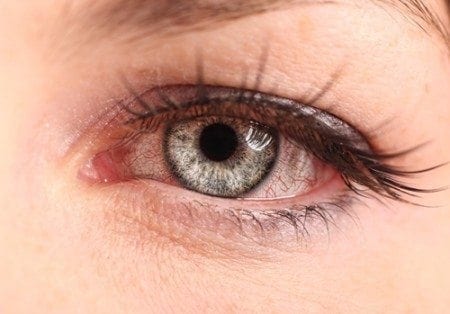Glaucoma is one of many age-related eye diseases that has some connection with light.
This condition is caused by damage to your eye’s optic nerve. Over time, it can lead to vision loss and blindness. It is the leading cause of blindness globally, especially among older individuals. It is more common in individuals older than 40 and often has an onset between 60 and 70 years of age.
What causes glaucoma?
The optic nerve is responsible for transmitting light from your retina, which senses illumination, to your brain. Due to increased pressure in your eye, this nerve can be damaged. This pressure is caused by a build up of fluid that flows in and out of your eye to clean it and nourish the tissues. As the nerve damage progresses, vision loss increases concurrently, eventually leading to blindness if the nerve is completely destroyed.
There are various types of glaucoma. The open-angle variation of this condition is the most common, and occurs when the open drainage angle of the eye becomes blocked, thereby causing pressure to build gradually. Due to the pace of the progression of this type of glaucoma, it is often not caught until severe damage has occurred.
Angle-closure glaucoma occurs when the drainage angle of the eye becomes completely blocked because it narrows. Complete blockage can lead to pressure building rapidly, resulting in a condition known as acute angle-closure glaucoma. This can cause headaches, nausea, vomiting, severe eye pain, blurred vision and seeing halos around lights. If left untreated, acute angle-closure glaucoma can quickly lead to blindness.
Other types include exfoliation syndrome, pigmentary glaucoma, developmental glaucoma and glaucoma caused by other eye disease or trauma.
What are the symptoms?
The way in which you experience light from your beside reading lamps or other devices can be a signifying factor of glaucoma. There are a few symptoms directly related to this interaction:
- Eye discomfort caused by atypical sensitivity to light or glare
- Halos or rainbows around lights
- Trouble adjusting in dim lighting conditions
Other symptoms include:
- Red-rimmed eye lids
- Gradual loss of peripheral vision
- Tunnel vision
- Nausea
- Vomiting
- Severe eye pain
Glaucoma and reading
In some cases, glaucoma has been shown to affect the ability to read. A 2009 study by researchers at the Wilmer Eye Institute of John Hopkins University sought to determine the relationship between glaucoma and spoken reading speed. The study, which had a population of 1,154, asked participants to read nonscrolling text aloud. Impairment was defined as reading less than 90 words per minute.
The researchers found that participants with unilateral glaucoma – only occurring in one eye – had spoken reading speeds that matched that of those without the condition. However, those with bilateral glaucoma, which is when the condition is present in both eyes, read 29 words per minute slower on average and had nearly twice the chance of developing a reading impairment.
“Our finding that glaucoma only affects reading speed when field loss is bilateral and severe corroborates the idea that reading is primarily a task of central vision and would be unlikely to be affected except in patients with [visual field] loss near fixation,” the researchers said.
Treatment options
Glaucoma can be treated in several ways, including options that range from minimally invasive solutions to surgical treatments:
- Medication: Glaucoma can be treated with oral medication, which is typically used in conjunction with eye drops. These medications function to lessen your eye’s fluid or increase drainage.
- Surgery: There are a couple surgical treatment options. Glaucoma patients can have laser surgery via a procedure called laser trabeculoplasty, where the doctor numbs the eye and uses a laser to open blocked drainage canals. There is also a conventional procedure known as a trabeculectomy, which involves the surgeon making an incision in the white part of the eye to create a new drainage location.



